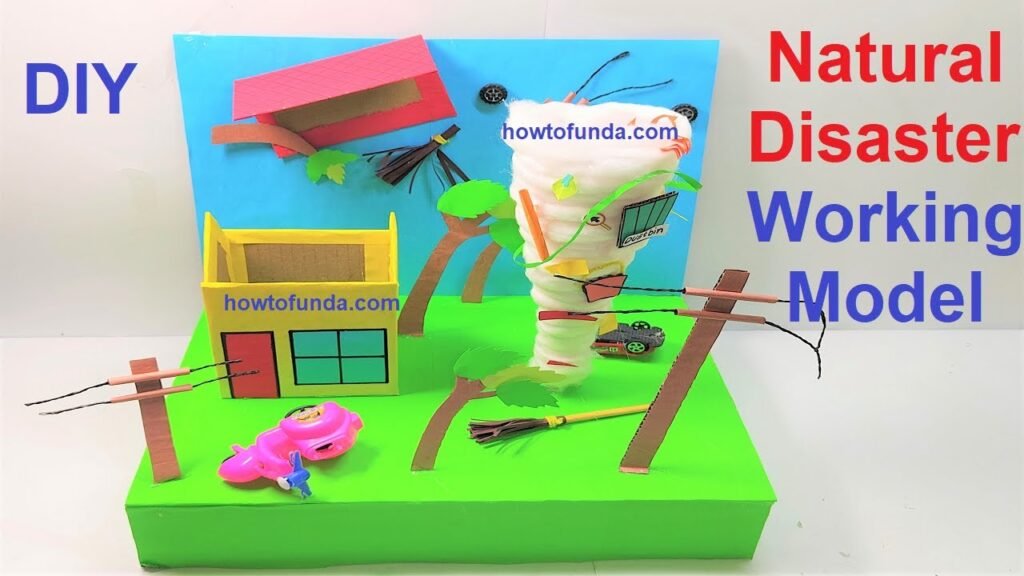Creating science models related to natural disasters can help demonstrate their causes, effects, and mitigation strategies.

Here are 15 science model ideas related to various natural disasters:
Earthquake Models:
- Earthquake simulation Model
- Build a model demonstrating Earthquake simulation model
- Earthquake Alarm Model
- Construct a model earthquakes alarm
- Tsunami Formation Model
- Create a model showing how underwater earthquakes or volcanic eruptions generate tsunamis using a water tank, sand, and a simulated seafloor.
Volcanic Eruption Models:
- Volcano Model
- Build a 3D model of a volcano using clay or papier-mâché to show its structure (vent, crater) and demonstrate eruption mechanisms using baking soda and vinegar.
- Lava Flow Simulation
- Create a model to demonstrate different types of lava flows (e.g., aa and pahoehoe) using colored wax or clay on a sloped surface to show flow dynamics.
Hurricane and Cyclone Models:
- Hurricane Formation Model
- Construct a model illustrating how hurricanes form over warm ocean waters using a spinning water tank, colored water, and air currents (e.g., hair dryer).
- Storm Surge Simulation
- Build a model demonstrating the impact of storm surge on coastal areas using a water tank, miniature buildings, and dyed water to show flooding effects.
Flood and Landslide Models:
- Floodplain Model
- Create a model of a floodplain using sand, soil, and miniature houses to show how heavy rainfall or snowmelt leads to flooding in low-lying areas.
- Landslide Model
- Build a model slope using soil or sand and simulate landslide triggers (e.g., rain, earthquakes) to demonstrate the movement of debris down the slope.
Wildfire and Forest Fire Models:
- Wildfire Spread Model
- Construct a model forest using twigs and paper to simulate how wildfires spread based on wind direction and fuel sources (e.g., dried leaves, twigs).
- Fire Weather Simulation
- Create a model illustrating fire weather conditions (e.g., low humidity, high temperatures) using a heat lamp and humidity gauge to demonstrate fire risk factors.
Tornado and Twister Models:
- Tornado Formation Model
- Build a tornado model using a clear bottle and swirling water to demonstrate the vortex formation and the destructive forces of tornadoes.
- Tornado Alley Simulation
- Create a model map of Tornado Alley in the United States and mark areas prone to tornadoes, using weather data and historical tornado tracks.
Drought and Desertification Models:
- Drought Effects Model
- Construct a model illustrating the effects of drought on agricultural lands using dried soil, miniature crops, and water scarcity scenarios.
- Desertification Process Model
- Build a model showing how desertification occurs due to overgrazing, deforestation, or climate change using sand, plants, and wind simulation.
These science models provide hands-on learning experiences to explore the science behind natural disasters and their impacts on the environment and society. Adjust the complexity based on grade level and resources available for each project.

